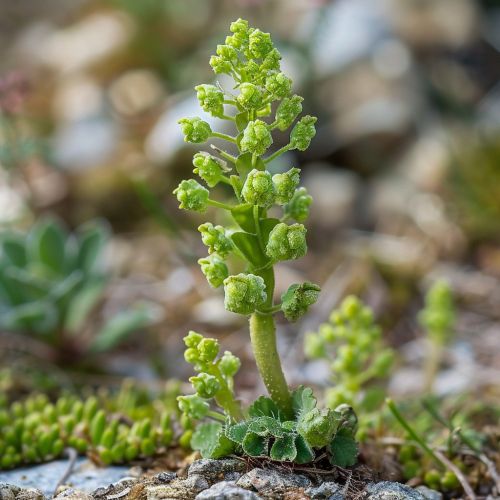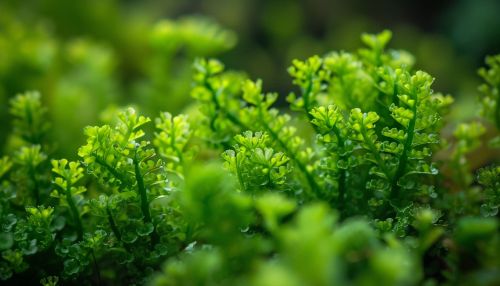Hornworts
Introduction
Hornworts are a group of non-vascular plants constituting the division Anthocerotophyta. The common name refers to the elongated horn-like structure, which is the sporophyte. With about 200 species, they are among the smallest of the free-living embryophytes.


Morphology
Hornworts have a unique and complex morphology among the land plants. They have simple, thalloid (flat and ribbon-like) gametophytes that grow from a basal meristem. Cells in the thallus often contain only a single large chloroplast. Unlike the other groups of bryophytes, where the sporophyte is a simple unbranched structure, hornworts have sporophytes that are long, tapering, and horn-shaped. The sporophyte grows from an archegonium embedded deep in the gametophyte tissue.
Life Cycle
Hornworts usually have a monoicous life cycle, meaning that both sexes are present on the same plant. Fertilization of the egg cell in the archegonium by a sperm results in a zygote, which then divides by mitosis to form a multicellular, diploid sporophyte. The mature sporophyte discharges its spores from a long, tapering horn, and the cycle begins anew.
Ecology and Distribution
Hornworts are found worldwide, though they tend to grow only in places that are damp or humid. Some species grow in large numbers as tiny weeds in the soil of gardens and cultivated fields. Large tropical and subtropical species of Dendroceros may be found growing on the bark of trees.
Evolution and Classification
The classification of hornworts has been a matter of debate. The group has traditionally been treated as a class (Anthocerotopsida), within the division Bryophyta. However, recent molecular studies have shown that the hornworts are a separate evolutionary line among the early land plants. Based on these findings, hornworts are now placed in their own division, Anthocerotophyta.
Economic and Ecological Importance
Hornworts are of minor economic importance today. They are sometimes grown in terrariums or as novelties for their unusual sporophytes. Some hornworts have been found to be a promising source of the anti-cancer drug Taxol. In the environment, they are important for their role in nitrogen fixation, as they form mutualistic associations with cyanobacteria.
See Also
- Bryophytes - Anthocerotes - Cyanobacteria and Nitrogen Fixation
